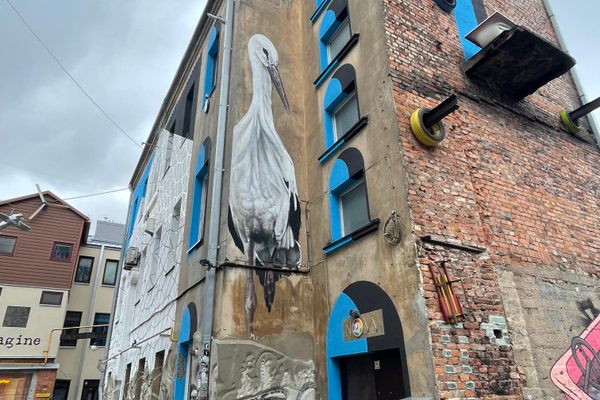About
Though the Asakusa district is known as one of the most historic neighborhoods in Tokyo today, with its old temples and traditional shops, it was once the center of Japan's modernization, where new inventions and cultures were introduced to the general public. It's the site of Japan's first amusement park, elevator system, bar, and motion picture theater, some of which still stand. The 12-story-tall Ryōunkaku tower, unfortunately, is not one of those survivors.
Once the tallest building in Japan as well as its first Western-style skyscraper, Ryōunkaku tower was advertised as the Japanese Eiffel Tower at the time of its completion in 1890. (It also housed the aforementioned elevator lift.) Its popularity gradually waned during the early years of the 20th century, but many people mourned the loss of the landmark when it was demolished following the irreparable damage caused by the Great Kantō earthquake in 1923.
The site where the Ryōunkaku once stood is now home to a supermarket after its many lives, and a historic marker can be found near the entrance. In addition to that, in 2018, the bricks of the tower's original foundation were unearthed during the construction work of an industrial building nearby, confirming the longtime theory that the Ryōunkaku stood on that spot.
Once the building was completed, a mural was added to its outer wall, a 26-foot-tall reproduction of an 1890 illustration of the Ryōunkaku by ukiyo-e painter Utagawa Kunimasa IV. It depicts tourists on the tower's observation deck as well as kites flying around it and a man gracefully parachuting down from the top. With hardly anyone stopping to admire it, the mural stands in relative obscurity as a mundane monument to what was once the grandest, most modern place in Japan.
Related Tags
Know Before You Go
The building is on the corner of a block outside the Hisago Street shopping arcade, currently tenanted by a yakiniku (Japanese barbecue) restaurant with noticeable signs on the window. The OK Store supermarket on the same block is also known as the site of the Ryōunkaku, with a historic marker near its entrance.
Hidden Japan: Sado Island, Nara & Kyoto
Explore a different side of Japan.
Book NowPublished
August 2, 2022































